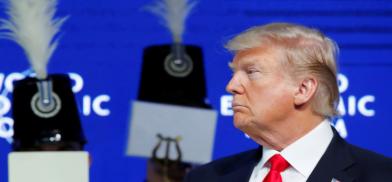When Trump comes calling, tech collaboration should be high on agenda
Technology collaboration by removing tariff and non-tariff barriers, specifically in the high technology segment, could be great lever of strategic and public policy partnerships for both countries, writes Kumar Deep (@kumar_deep) for South Asia Monitor

In the run-up to US President Donald Trump’s maiden visit to India, Secret Service agents have fanned out in key locations the POTUS (President of the United States) is expected to visit, with their trademark dark suits, dark sunglasses, high tech surveillance gadgets et al. That’s not the only spectacle India will witness for the next few weeks. ‘Namaste Trump,’ in Ahmedabad promises to be a grander display of abundance and strategic friendship than ‘Howdy Modi’ in Houston. Trump has already made statements about being No. 1 on Facebook, ahead of Modi, and expressed elation over the millions of people who will greet him in India.
Meanwhile, a close watch will be kept on any forward movement in the crucial India-US strategic partnership. The US, and especially Trump, is keen that India open its markets further for American goods and services and act as a key balancing partner in the region facing threats of dominance from China. Pushing his “America First policy,” Trump has been chipping away at any preferential treatment to India in the field of trade. He recently declared that India, with a national average income of US $2000 and a nearly $3 trillion economy, was ‘developed,’ on par with China, which is five times its size, thereby taking it off any preferential trade policy list. A US-based think tank, World Population Review, has ranked India as the fifth-largest economy, overtaking the UK and France. While it may have led to opening a few bottles of fine Tennessee sour whiskey in some quarters, many look at this development as a bleak prospect for any meaningful trade deal.
India’s key ask from Washington at this stage is the reinstatement of the Generalized System of Preferences (GSPs), which will allow India to export nearly US$ 6 billion worth of goods to the US under nearly zero tariffs. While it may be less than 10% of overall Indian exports to the US, for Trump it is an eyesore.
Several trade watchers and policy analysts have indicated that the US is pushing for an increase of nearly US$ 5-6 billion in the additional trade value of goods before making any concessions. Hopeful of a trade deal, nearly US$ 3.5 billion worth of defence agreements between India and the US are ready to be signed when Trump visits India. These include nearly 30 armed helicopters for naval operations, a key tool in the strategic Indian Ocean where China, more often than not, has been seen flexing its maritime muscle. Whether a sale of weapons and military helicopters is seen within the broad contours of India US trade is unclear.
That leaves, fraught with nationalist chanting lobbies on both sides, attention on the agricultural products and medical equipment sectors. Reports have surfaced of India’s willingness to allow low tariff imports of some frozen meat products, along with berries and nuts. Conditional import of dairy products, with strict compliance to the vegetarian nature of the product, is also possible. Limited concessions on medical devices price caps, imposed in the post-GSP era, can also be brought to the table.
However, right now, chances of a mini trade deal are also looking like a distant possibility. US Trade Representative Robert Lighthizer, who was supposed to be in India a week before Trump to given final contours to the deal didn’t come and, instead, substituted it with video conference calls with his Indian counterpart, Commerce Minister Piyush Goyal. It is unclear if the duo would be able to strike a lighting deal before the presidential visit.
Lighthizer is now expected to accompany Trump, indicating that last-minute major announcements, literally minutes ahead of the crucial leadership meetings, are possible. This gives hope for a fig leaf trade deal, pending since Howdy Modi in Houston last year, to be accomplished in Namaste Trump.
Whether this deal happens or not, it still leaves out an impactful chunk of digital trade between India and the US. Trade in services between the two nations, large portions of it digitally aided, remains a key area of negotiation. US companies have raised concerns with Indian counterparts and the government on the restrictive nature of tariff and non-tariff barriers which limit access to US tech firms to India. Some of the proposed legislation, including the upcoming Data Protection Bill has text additions which suggest compulsory data localization and sharing of non-personal data with the government, are seen as growth and innovation barriers in a connected, seamless, shared digital economy of two great democracies.
Technology collaboration by removing tariff and non-tariff barriers, specifically in the high technology segment, could be great lever of strategic and public policy partnerships for both countries. One area to work together is looking at developing protocols beyond fifth-generation, or 5G, followed by communications. India and the US can be natural partners in the new digital trade world.
Rhetoric and spectacle aside, leaders from both nations have to look at meaningful and time-bound solutions to address each other’s concerns on emerging trade issues while ensuring prosperity for local markets.
(The writer is Country Manager, ITI Council, India)










Post a Comment